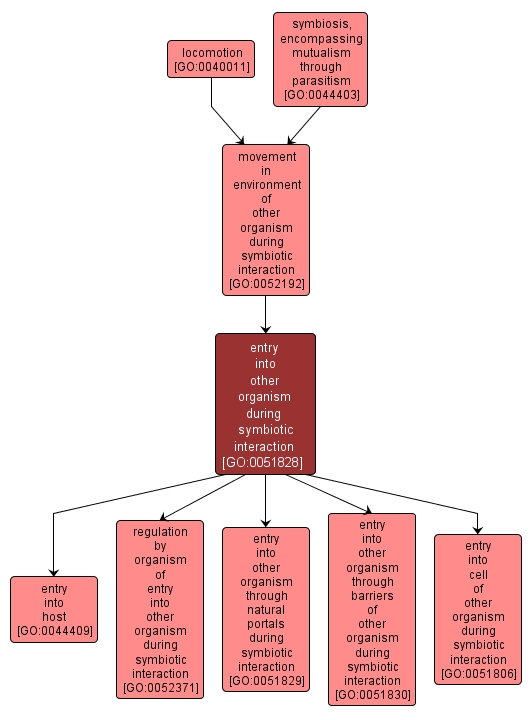GO TERM SUMMARY
|
| Name: |
entry into other organism during symbiotic interaction |
| Acc: |
GO:0051828 |
| Aspect: |
Biological Process |
| Desc: |
Penetration by an organism into the body, tissues, or cells of a second organism, where the two organisms are in a symbiotic interaction. |
Synonyms:
- invasive growth
- invasion into other organism
- other organism invasion
- invasion of other organism
|
|

|
INTERACTIVE GO GRAPH
|














